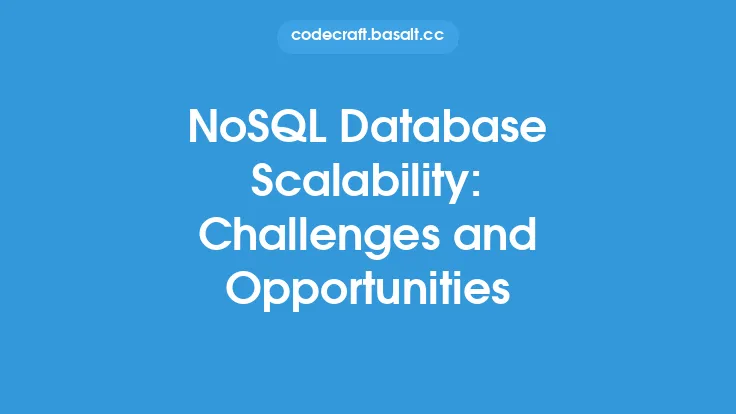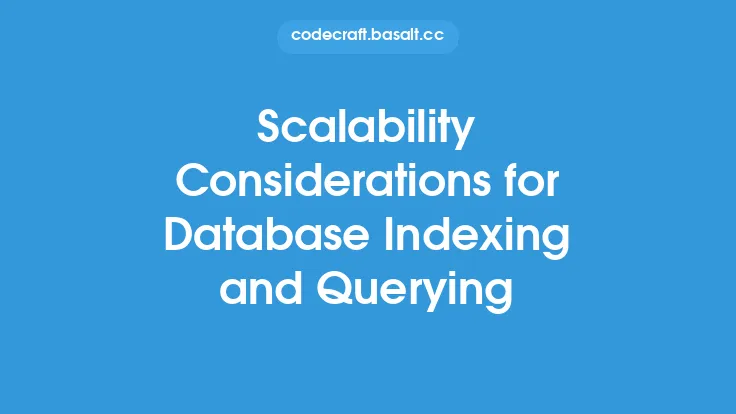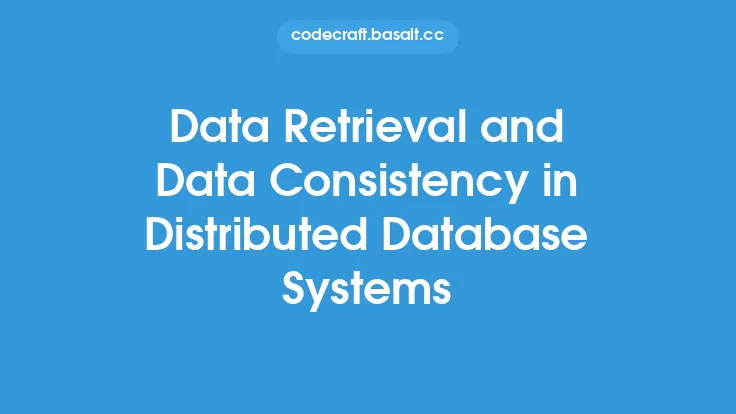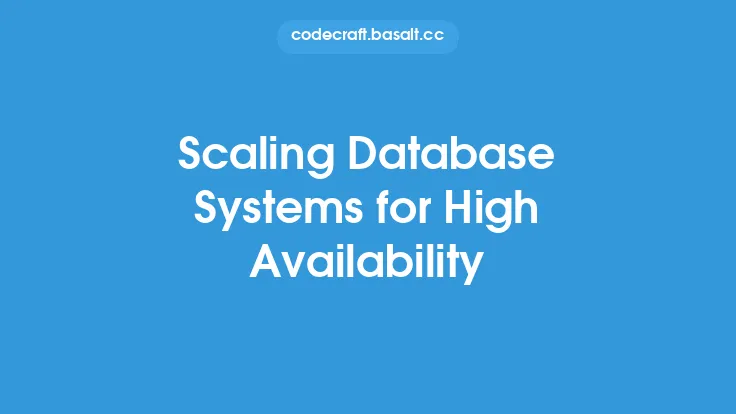Database replication is a critical component of any scalable database system, as it enables data to be distributed across multiple servers, improving uptime, and reducing the risk of data loss. In a replicated database system, data is copied from a primary server, known as the master, to one or more secondary servers, known as slaves. This allows the system to continue operating even if one or more servers become unavailable, ensuring high availability and minimizing downtime.
Introduction to Database Replication
Database replication involves maintaining multiple copies of data in different locations, such as on different servers or in different data centers. This can be done using various replication strategies, including master-slave replication, multi-master replication, and peer-to-peer replication. Each strategy has its own advantages and disadvantages, and the choice of which one to use depends on the specific requirements of the application and the database system.
Types of Database Replication
There are several types of database replication, each with its own strengths and weaknesses. Master-slave replication is the most common type, where one server acts as the master and the others act as slaves. The master server accepts writes and replicates the data to the slave servers, which can be used for read-only operations. This approach is simple to implement and provides good performance, but it can be prone to data inconsistencies if the master server becomes unavailable.
Multi-master replication, on the other hand, allows multiple servers to accept writes and replicate the data to each other. This approach provides better availability and scalability, but it can be more complex to implement and manage. Peer-to-peer replication is a variation of multi-master replication, where each server acts as both a master and a slave, and data is replicated between all servers.
Database Replication Strategies
There are several database replication strategies that can be used to improve scalability and uptime. One common strategy is to use asynchronous replication, where data is written to the master server and then replicated to the slave servers in the background. This approach provides good performance, but it can lead to data inconsistencies if the master server becomes unavailable before the data is replicated.
Synchronous replication, on the other hand, requires that data be written to all servers before it is considered committed. This approach provides better data consistency, but it can impact performance, especially in distributed systems where network latency can be high.
Another strategy is to use semi-synchronous replication, which provides a balance between asynchronous and synchronous replication. In this approach, data is written to the master server and then replicated to at least one slave server before it is considered committed. This provides better data consistency than asynchronous replication, while still providing good performance.
Conflict Resolution in Database Replication
Conflict resolution is an important aspect of database replication, as it determines how the system handles conflicts that arise when multiple servers attempt to write to the same data. There are several conflict resolution strategies, including last writer wins, where the last update to a piece of data is considered the authoritative version.
Another strategy is to use a conflict resolution algorithm, such as the multi-version concurrency control (MVCC) algorithm, which uses version numbers to determine the order in which updates were made. This approach provides better data consistency, but it can be more complex to implement and manage.
Database Replication Tools and Technologies
There are several database replication tools and technologies available, including open-source solutions such as MySQL Replication, PostgreSQL Replication, and MongoDB Replication. These tools provide a range of features, including support for different replication strategies, conflict resolution algorithms, and monitoring and management tools.
Commercial database replication solutions, such as Oracle Data Guard and Microsoft SQL Server Replication, provide additional features, including support for advanced replication strategies, such as multi-master replication, and integration with other database management system (DBMS) features, such as high availability and disaster recovery.
Best Practices for Database Replication
There are several best practices for database replication that can help improve scalability and uptime. One best practice is to use a combination of replication strategies, such as asynchronous and synchronous replication, to provide a balance between performance and data consistency.
Another best practice is to monitor and manage the replication process, using tools such as replication lag monitoring and conflict resolution logging. This can help identify issues before they become critical and ensure that the system is operating correctly.
Conclusion
Database replication is a critical component of any scalable database system, as it enables data to be distributed across multiple servers, improving uptime, and reducing the risk of data loss. By understanding the different types of database replication, replication strategies, and conflict resolution algorithms, database administrators can design and implement a replication system that meets the needs of their application and provides high availability and scalability.
By following best practices, such as using a combination of replication strategies and monitoring and managing the replication process, database administrators can ensure that their replication system is operating correctly and providing the required level of scalability and uptime. As database systems continue to evolve and become more complex, the importance of database replication will only continue to grow, making it a critical aspect of any database management strategy.





